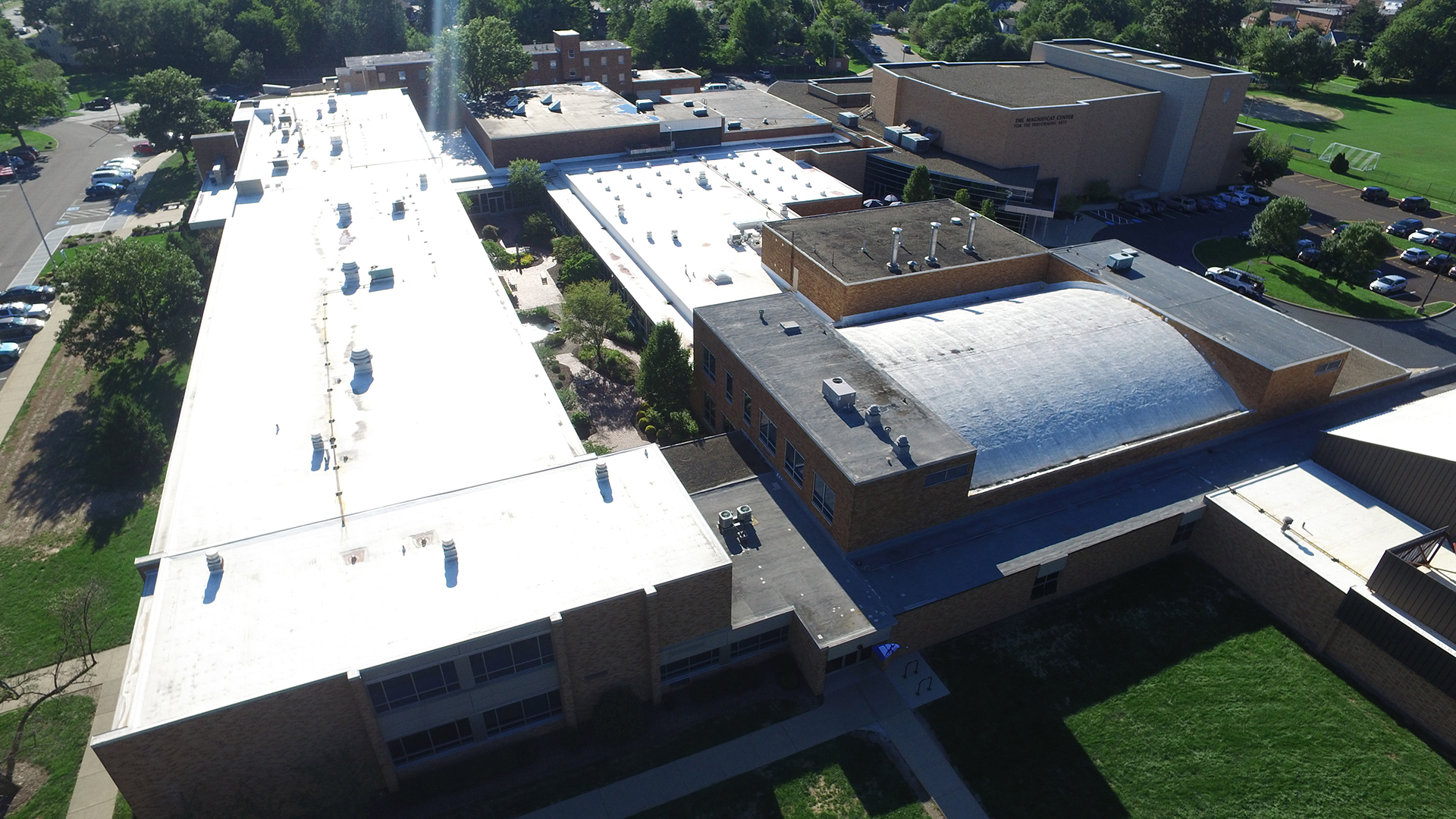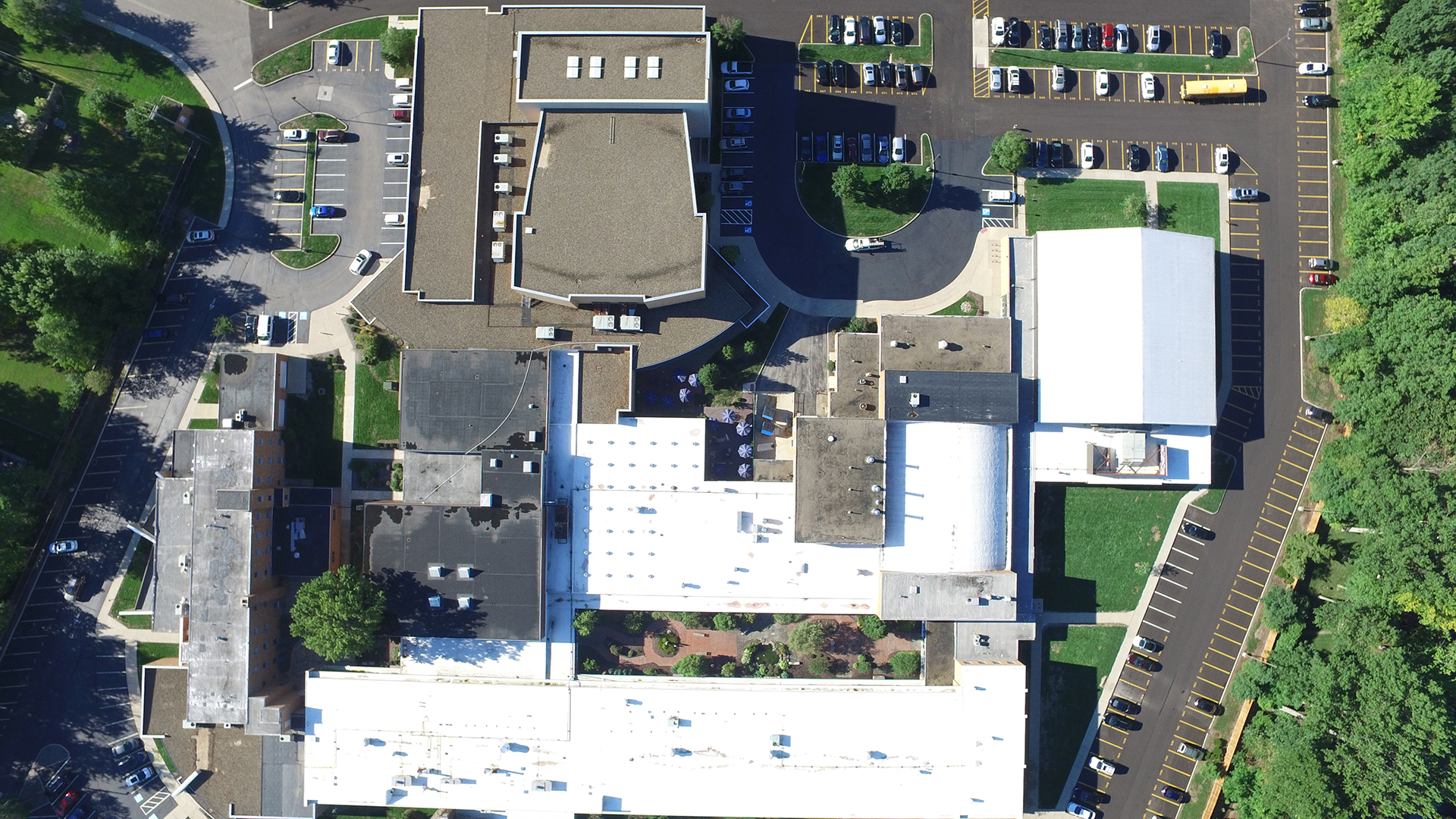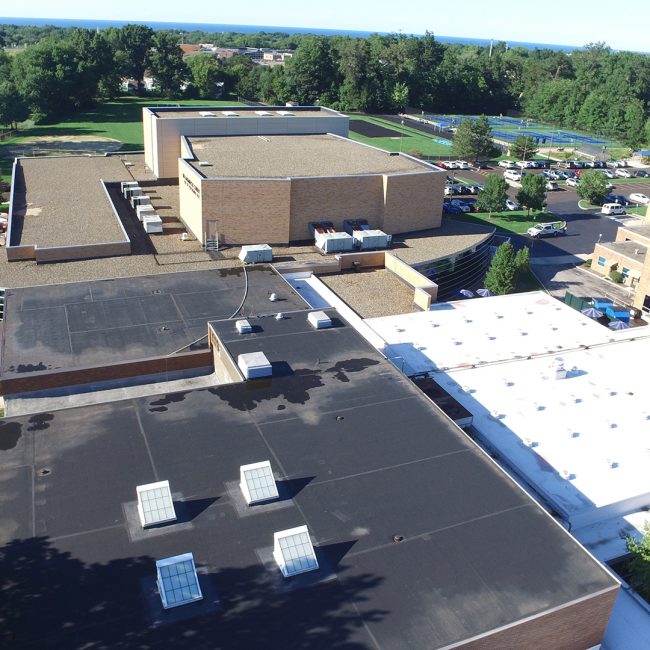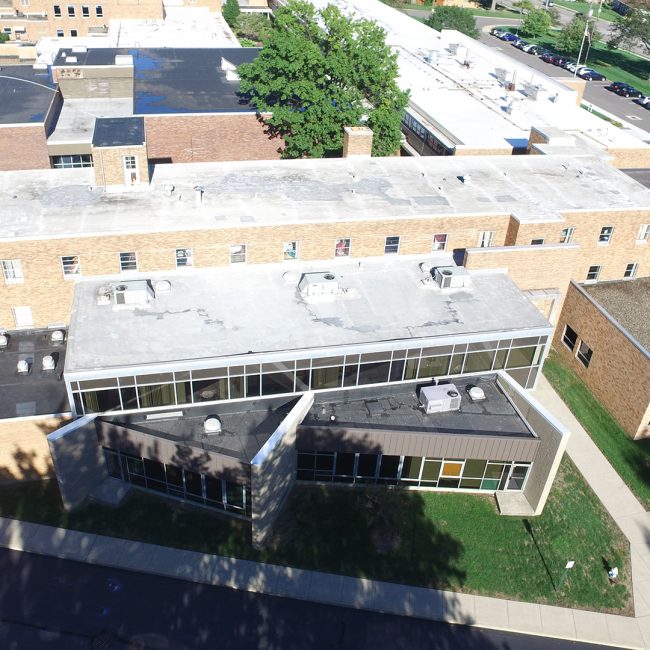
Facilities managers at schools, colleges, and universities must deal with a variety of ongoing issues, but none can be as cumbersome—or expensive—as replacing a roof. Preventive maintenance is the key to both a healthy roof and a stable budget. The goal is to stop problems before they arise in order to avoid costly repairs and replacements later.
Two of the biggest mistakes a facility manager can make are 1) neglect and 2) trying to maintain a roof using general maintenance staff. Roofing specialists have been trained to spot intricate problems before they occur. If there are any punctures or holes on the roof, for example, some may be too small for a non-roofing professional to notice and will not get patched to prevent water from entering. Caulking details around penetrations, deterioration, clogged roof drains, end laps, edge metal details, and strainers over the top of drains are just a few more examples of problems that often go unnoticed. Roofing professionals are also equipped to give diagnostic recommendations that could benefit the integrity of the building and impact other areas.
Facilities managers and owners of commercial buildings often need to delay large expenses for one reason or another. There may be ways to extend the life of roofing and enable facilities to put off the high cost of a replacement by several years. It is important to prioritize the work that needs to be done in terms of safety, need, and cost, in order to determine the best plan with the most impact and buy the time needed to avoid throwing good money at the wrong problems.

Image courtesy of Legacy Roofing Services.
Maintenance Myths
A common misconception is that a new roof does not need to be maintained; this is untrue. The best way to prolong the life of a roof is to put a preventive maintenance plan in place right away. A flat roof, for example, demands that water be removed from the surface as soon as possible. On flat, commercial roofs, the water does not shed off freely as it does on pitched roofs over residential homes, which causes the liquid to pond and leak into the building. It is also important to get a visual of the area to determine if there are any open laps, punctures, or water damage. Any structural damage caused by unaddressed issues on the roof, depending on the weather, the age of the roof, and its current condition, may further compound an already existing problem.
Many manufacturers give incentives for properly maintaining a roof, including extending the life of the warranty for up to 10 years. Commercial service providers can act as a liaison between commercial building owners and material manufacturers to qualify for or extend warranty coverage.


Images courtesy of Legacy Roofing Services.
Facilities managers should also coordinate seasonal inspections. In the spring, it is essential to check the roof and monitor how it fared over the winter. Snow, ice, freezing, and thawing can cause an overstressed roof to leak, creak, or sag. In the fall, the objective is to clear all drains of leaves and debris to allow water flow. A repercussion from the blazing summer is that heat vents commonly detach from their hinges and allow water into the structure. A thorough examination needs to be done to find all issues that could potentially worsen once the winter temperatures set in.
When inspecting, assessing, and repairing commercial roofing, it can often be difficult to get the full picture of the actual condition and what work needs to be performed. An onsite inspection can be done, but even professionals may not be able to detect small cracks and other problems that have yet to fully surface. The decision to replace an entire roof versus making limited repairs is not only about cost but about having the correct diagnosis in order to maintain the structural integrity of the roof. Fortunately, technology has made it possible to take the guesswork out of these decisions with the use of drones and infrared imagery.
Drones and Infrared
Drones serve two functions: 1) They allow for a visual inspection with photos, and 2) they capture infrared scans that can determine inconsistences in the roofing material. By using military-grade infrared technology, which is the equivalent of having an MRI (magnetic resonance imaging) scan of the roof, essential information can be gathered to greatly assist in determining the most efficient and economical solutions.
Facilities managers also need to understand how frequently workers will be on the roof at any given time for repairs of air conditioning, heating, satellite, gutter and grease cleaning, and other equipment. Many contractors who service commercial buildings may not be thinking about the health of the roof and can often cause unintentional damage. It is recommended to have a path laid out on the roof for workers to tread on while they service the property.
When problems are caught before irreversible damage sets in, the cost factor is dramatically decreased in the long term. Regular maintenance by a professional is essential to maximizing the life span of not only the roof but also the building, thereby protecting the investment made in the roof. Proactively identifying problems and needed repairs will go a long way to ensure the health of the roof and avoid major complications and costs. A relatively small amount of money spent on preventive maintenance today can save a tremendous amount of time and money tomorrow.
Steve Smith is vice president of commercial roofing for Legacy Roofing Services and can be reached at [email protected]. This is his first article for Facilities Manager.
Facility Asset Management
Covers the issues and challenges surrounding the management of a facilities department, including solutions for benchmarking performance measures, database and reporting systems, and professional and educational trends in facilities management. To contribute, contact Lindsay Wagner, field editor of this column.
See all Facility Asset Management.


